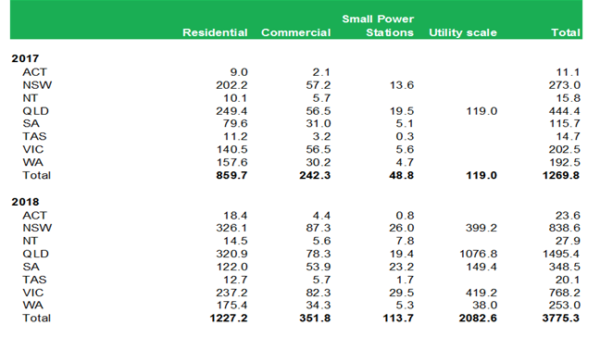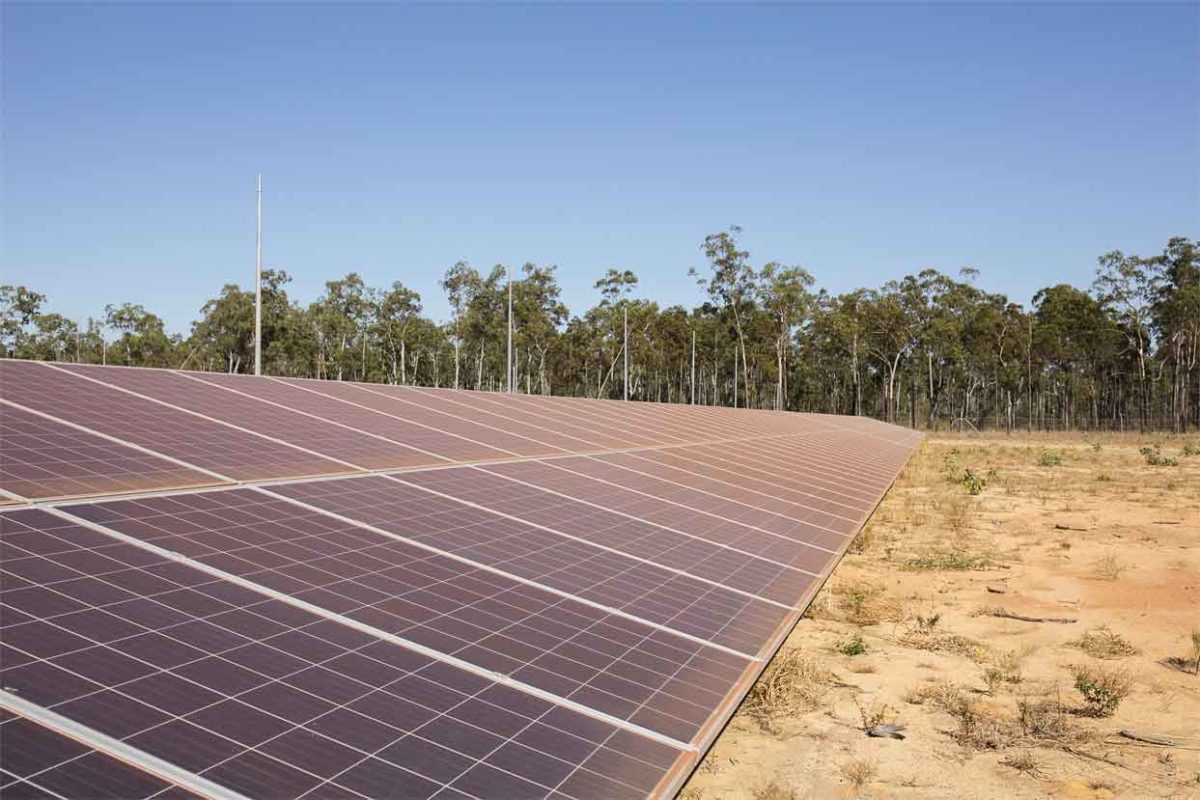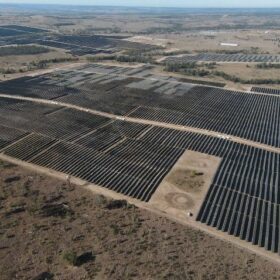2018 was a record year for Australia’s solar PV sector across all segments, with more than 2 GW of large-scale PV added, and over 40% increase in residential PV.
Based on data collected by Green Energy Trading, Australia added over 3,775 MW of solar capacity last year, up from 1,270 MW in 2017.

Residential is defined as 15 kW or below. Commercial is 15-100 kW, small power stations are 100 kW-5 MW and utility scale is everything bigger than 5 MW.
There was 2,083 MW of big PV added last year, around half of it in Queensland, up from a meager 119 MW in 2017.
This boom is set to spill over to 2019, which is in line for even bigger figures given the capacity of large-scale solar project currently under construction. According to the Clean Energy Council’s figures released in December, there are over 9 GW of large-scale solar projects currently under construction or soon to start. This totals an investment of almost $11.5 billion, creating 8,834 jobs.
“There is more than 3000 MW under construction that is likely to be completed over 2019,” Tristan Edis, director of Green Energy Markets, tells pv magazine Australia.
“We can see the large amounts of solar capacity are having a depressive effect on wholesale power prices in Queensland and this will spread to other states over the next 12 months as all the new capacity comes online.”
Rooftop fleet
As the number of Australian rooftop solar PV systems passed the two million mark late last year, with an average six panels installed a minute, both residential and commercial grew by more than 40%, reaching 1,227 MW and 351 MW respectively.
The main drivers for home owners to install PV continue to be high electricity prices and falling costs of solar accompanied by a shorter payback period.
The analysts remind that while the stabilisation in electricity prices after large rises in prior years could lead to drop off in the residential segment, a noticeable decline in sales seems unlikely.
“A lot of the growth in capacity has been driven by upsizing not just growth in number of installations,” Edis says, noting that the residential sector is effectively hitting a ceiling on its ability to upsize system size.
“In particular the market seems to be concentrating into 6.6kW sized systems which are a reflection of networks imposing a 5kW inverter limit for automatic connection and then STC eligibility rules only allowing 33% oversizing of panels to inverter capacity.”
On the state level, New South Wales was leading the charge last year, with 326 MW added, up almost 60% from 2017, followed by Queensland with 320 MW up from 249 MW last year.
The slowdown in the residential segment in 2019 will probably affect all but Victoria, thanks to its Solar Homes program launched last year, which aims to put solar panels on 700,000 Victorian homes.
“This coming year we expect Victoria will go gangbusters in residential,” Edis says.
“We can already see a large leap up in installations since October when the state government’s rebate became available. We are hearing of solar retailers who are sold out until mid way through this year in that state due to staff constraints.”
Indeed, Victorian business have already reported a big increase in interest since the program launch and staff additions, like in the case of Gippsland Solar, a business in the coal-dominated Latrobe Valley.
Small power stations
Last year, small power stations with the capacity between 100 kW – 5 MW took off big time and grew by more than 132%.
This new solar sector, which comprises mainly rooftop systems and a bit of ground mount mixed in, will be the segment to watch this coming year.
“For small power stations segment, we think there’s still room to run as the solar industry has only really got started in selling effectively to these clients and grappling with more involved network connection processes, plus there are long purchasing decision cycles in this segment that should ultimately flow through to sales this year driven by large rises in wholesale power prices that took place in 2017 and 2018,” Edis says.
This content is protected by copyright and may not be reused. If you want to cooperate with us and would like to reuse some of our content, please contact: editors@pv-magazine.com.








3 comments
By submitting this form you agree to pv magazine using your data for the purposes of publishing your comment.
Your personal data will only be disclosed or otherwise transmitted to third parties for the purposes of spam filtering or if this is necessary for technical maintenance of the website. Any other transfer to third parties will not take place unless this is justified on the basis of applicable data protection regulations or if pv magazine is legally obliged to do so.
You may revoke this consent at any time with effect for the future, in which case your personal data will be deleted immediately. Otherwise, your data will be deleted if pv magazine has processed your request or the purpose of data storage is fulfilled.
Further information on data privacy can be found in our Data Protection Policy.